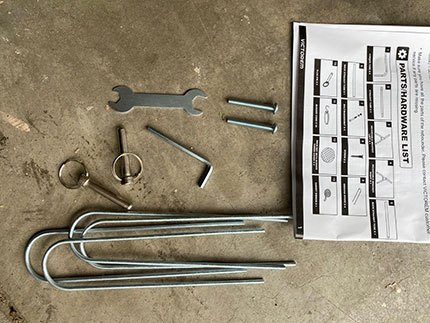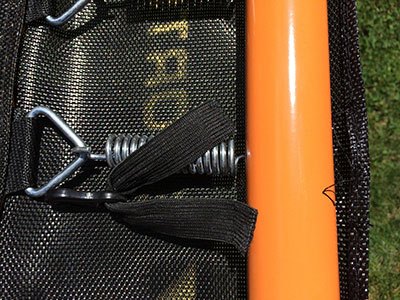Do you want to take the future of your lacrosse game into your hands? Then a DIY lacrosse rebounder is just what you need! Not only will it let you practice drills and improve your skills on your own, but it could also help reduce travel costs.
Whether you're an experienced player or still learning the ropes of the game, this guide for making a DIY lacrosse rebounder can help you get started with constructing one from scratch.
From gathering materials to finding tutorials, here's everything you'll need to make your personalized rebounder at home!
More...
Take Away Key Points:
If you want to make your rebounder and master your attack, defense, and other positions, you will need the best material and tools to make your lacrosse rebounder.
Let's start the building procedure.
Should you make or buy a lacrosse rebounder?
There is no correct answer, so you should consider your needs and budget. If you are looking for a more professional, durable rebounder that will last for years of practice, it is best to buy a lacrosse rebounder.
However, if you are looking for a cheaper option or want to customize the size and shape of the rebounder, then making your DIY lacrosse rebounder may be the better option.
Building a lacrosse rebounder: The best procedure
Below you can find all the steps to make your rebounder instead of those commercial rebounders available on the market. Let's see.
Pre-step: Gathering the materials and tools

If you're interested in making your rebounder, you need to collect the right tools and materials to start the process. You will need the following:
- wood log: the bigger, the better
- electrical machines
- plywood
- screws.
Step 1: Find the wood
You need a serious mass of wood. It must be roughly flat. It can be over three feet in diameter.
Step 2: Constructing a flattening frame
You can find various tools, like caster wheels, and use them with recycled wood when making a trolley for your router. You can fix your router at a desired height.
You shouldn't have issues mounting a router into a surface. You can remove the screws on the face and use them as a basis when cutting holes into your surface. For instance, you can use a sheet of 0.25 inches of plywood to cut the router width of three inches.
Join the frame with deck screws for quicker dismantling. You can match the proportions for the correct settings and measure the parts to ensure the target will be stable for later use.
Step 3: Flattening the structure
You need the log to be as flat as possible before you begin with further settings. Then, you should do the cleanup with a hand planer or chainsaw to level the log as much as possible on the floor.
You can use wedges to level it, as the two faces don't need to be parallel. Progressively lower the bit as you apply the plunge feature on the router.
However, if the log is not flat enough and the travel of your router cannot cover the whole construction, you will have to lower the frame a bit. Then, you should use the screws to assemble the frame.
Based on the angled surface and its sturdiness, you might need more passes to make the best target and flat, even surface for the best use. You can start by removing two millimeters at a time. Next, you can remove the highest peaks, then remove the materials from the structure and cover the whole construction with the final pass.
But flattening might not be enough, so you can use the hand planer for extra removal of excess parts, so the construction is smooth afterward. You should use a surfacing bit for the complete process.
Step 4: Adding a supportive leg
You can use a 2×6 and attach it by hinges on the back. You will prop up to the round of wood. This step will offer an adjustable angle of attack. You can also slap a clear coat on the front of the construction.
Step 5: Setting up and practicing

The wood rebounder will be smaller than commercial rebounders, and you should consider adding a net around or behind the construction to catch the stray ball. In addition, the thrown ball will bounce back too fast, so pay attention to what is behind your thrower.
Don't forget that hits on the edges can bounce back erratically. As this is a DIY rebounder, it might be better if lacrosse players wear protective gear while practicing catching fast throws, passes, shots, and dodges. Also, players should be aware of other people's presets while practicing to avoid hurting somebody.
Of course, this is only one way to make a lacrosse rebounder. You can search for additional information and check options by watching various videos. They use different materials and tools to build other constructions. You can find multiple templates here.
Conclusion
When making your DIY lacrosse rebounder, ensure you measure all the parts correctly to create the best place for the ball and the best bouncer.
Also, gather your tools and materials for the most convenience when practicing lacrosse.
Finally, if you need help, ask experienced people to help you construct your lacrosse rebounder.
